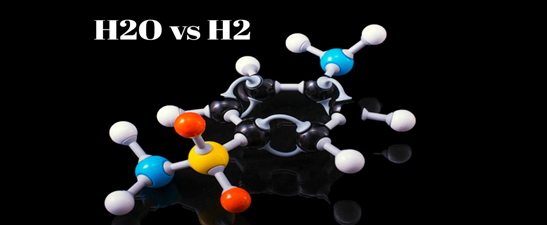By Teresa Cheng, California Field Manager
Hydrogen has been touted as a clean energy panacea to replace polluting sources including gas plants, airplanes and heavy industry. The Biden administration has infused billions of dollars to kickstart the budding hydrogen industry, both through granting $8 billion in federal funding to be allocated to regional “hydrogen hubs” – one of which will be in California – as well as the Inflation Reduction Act’s generous tax credits for “clean hydrogen” production, the rules of which are currently being hotly debated.
However, the use of hydrogen in a decarbonization strategy is not so straightforward. The production, transport, storage, and use of hydrogen – not to mention its water use – pose unique risks related to climate, safety, and public health, and at a cost that merits significant concerns for ratepayers and frontline communities living near potential hydrogen production, storage and end use sites.
“Green”hydrogen is produced by electrolyzing 100% renewable electricity, like wind, solar, and geothermal energy, to split water molecules into hydrogen and oxygen atoms. Globally, less than 1 percent of hydrogen is produced through electrolysis and less than 0.02% is green. In the U.S., more than 99 percent of our annual supply of hydrogen is “gray,” which comes almost entirely from fossil fuels through a process called “steam methane reforming.”

The estimated water consumption rate for purposes of green hydrogen production requires roughly nine kilograms of water to produce one kilogram of hydrogen.[i] For context, supplying hydrogen for a 288-megawatt power plant using hydrogen would require the equivalent of an Olympic-size swimming pool of water every 12 hours. Including the amount of water needed for cooling hydrogen electrolyzers would further increase the total water usage up to twenty kilograms.[ii]
That’s why it’s especially troubling that gas utility SoCalGas is grasping at a lifeline by stoking the hydrogen hype and proposing a long-distance pipeline – the “Angeles Link”- that would transport hydrogen produced in our already water-starved desert to be burned in Los Angeles’s power plants. As the West faces the worst megadrought in 1,200 years, this plan risks not only exacerbating our already limited water supplies, but saddling SoCalGas ratepayers with astronomical rate increases to fund this new infrastructure.
Once hydrogen is produced, there are essentially two options for using it: through fuel cells or combustion. Burning even green hydrogen risks intensifying local nitrogen oxide (NOx) pollution, a precursor to PM2.5 and ozone that can cause serious harm to air quality and public health, like increased rates of asthma, pregnancy complications, and premature death.[iii] When used in a fuel cell, the only byproducts of hydrogen are heat and water vapor.
Regardless, hydrogen’s small molecular size, high energy density, high flammability, and odorless and colorless nature pose safety and health risks for workers and frontline community members. Because hydrogen is an indirect greenhouse gas that when released into the atmosphere, increases methane, ozone, and stratospheric water vapor, [iv], hydrogen leakage during production, transport, and storage could even worsen our current greenhouse gas emissions – up to 100 times more potent than carbon emissions over a 10-year period.[v]
Hydrogen could play a role in meeting our climate and energy needs, as long as it is truly “green” and made and used in ways that are not damaging to the health of our communities and climate. Green hydrogen could help cut pollution for limited, hard-to-electrify end uses, like ships, airplanes and some high heat industrial uses. However, fossil fuel companies are eager to market hydrogen as a “silver bullet” solution and propose damaging and needless end uses, including burning it in power plants, passenger vehicles, and even piping it into buildings.
It’s up to us to make sure that the clean energy future we’ve fought for decades does not get hijacked by fossil fuel companies attempting to greenwash their efforts. As a Sierra Club volunteer, you can play a critical role in shaping the future of how the hydrogen industry unfolds in California.
For more information, read Sierra Club’s blog: “Hydrogen: Future of Clean Energy or a False Solution?” and to learn how to get involved, contact Senior Field Organizer Julia Dowell at julia.dowell@sierraclub.org.
Teresa is the CA Field Manager supporting Sierra Club’s field organizers working to transition California off of the fossil gas system, protect our desert ecosystems, and coordinates with the Water Committee on all things water.
[i] Marcus Newborough, Graham Cooley, Green hydrogen: water use implications and opportunities, Fuel Cells Bulletin, Volume 2021, Issue 12, 2021,Pages 12-15, ISSN 1464-2859,https://doi.org/10.1016/S1464-2859(21)00658-1.
[ii] Sierra Club, Hydrogen: Future of Clean Energy or a False Solution? (Jan. 2022), https://www.sierraclub.org/articles/2022/01/hydrogen-future-clean-energy-or-false-solution.
[iii] U.S. Environmental Protection Agency, Basic Information about NO2, https://www.epa.gov/no2-pollution/basic-information-about-no2#Effects (last visited July 25, 2022); Stephanie Lovinsky-Desir, et al., Air Pollution, Urgent Asthma Medical Visits And The Modifying Effect Of Neighborhood Asthma Prevalence, 85 Pediatric Rsch. 36 (2018), https://doi.org/10.1038/s41390-018-0189-3; Jun Wu, et al., Association Between Local Traffic-Generated Air Pollution and Preeclampsia and Preterm Delivery in the South Coast Air Basin, 117 Env’t Health Perspectives 1773 (2009), https://pubmed.ncbi.nlm.nih.gov/20049131/.
[iv] Ilissa B. Ocko and Steven P. Hamburg, “Climate consequences of hydrogen emissions,” Atmos. Chem. Phys., 22, 9349–9368, 2022 (Climate Consequences of Hydrogen Emissions) at 9351, available at https://doi.org/10.5194/acp-22-9349-2022.
[v] Ocko, I. B. and Hamburg, S. P.: Climate consequences of hydrogen emissions, Atmos. Chem. Phys., 22, 9349–9368, https://doi.org/10.5194/acp-22-9349-2022, 2022.

